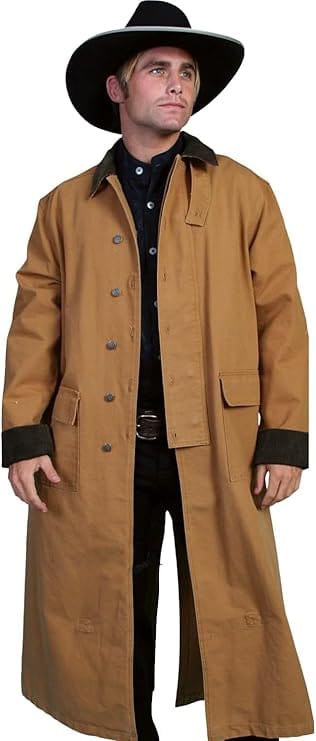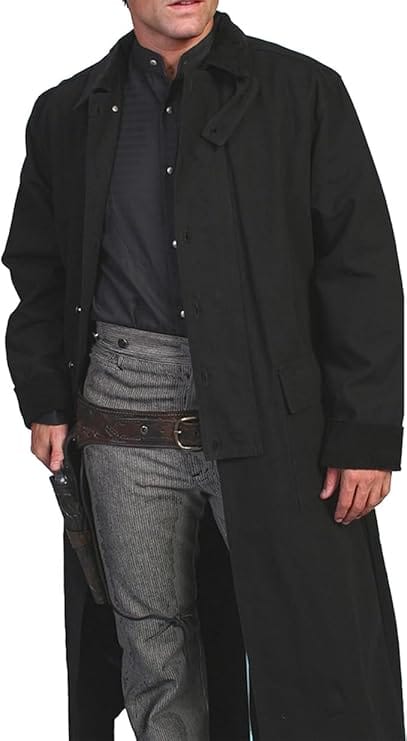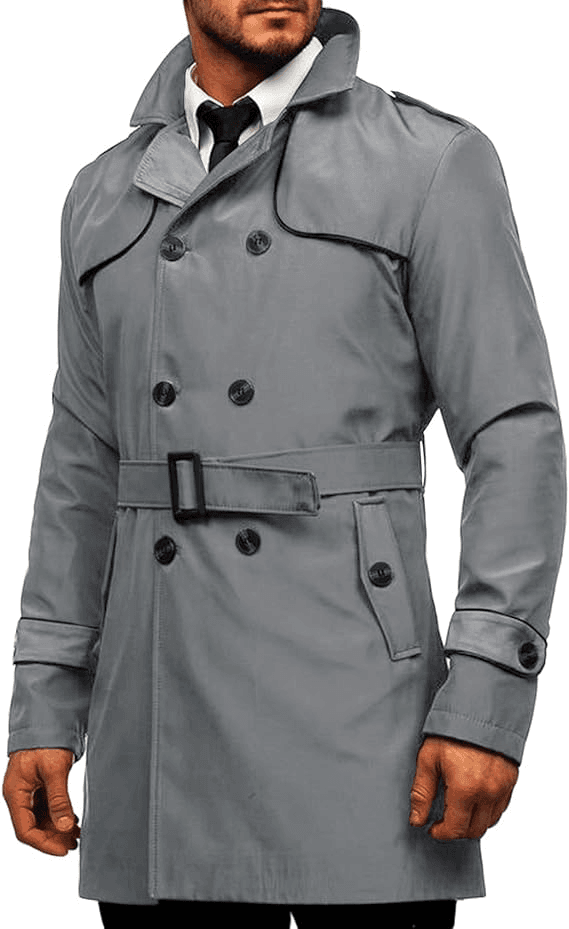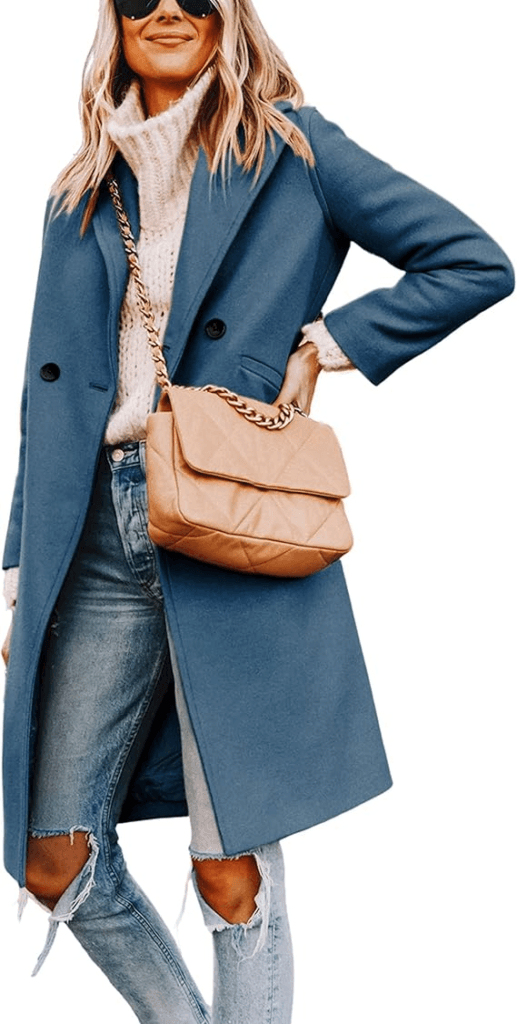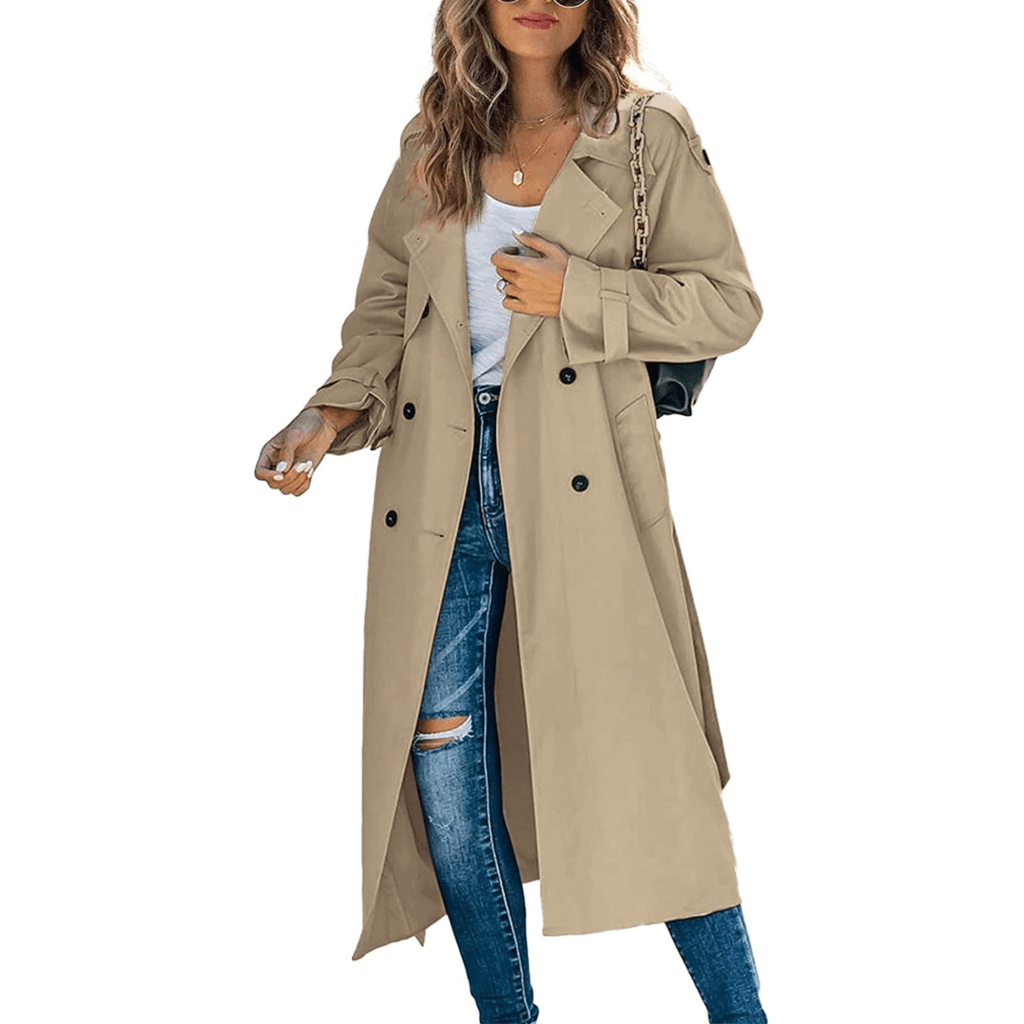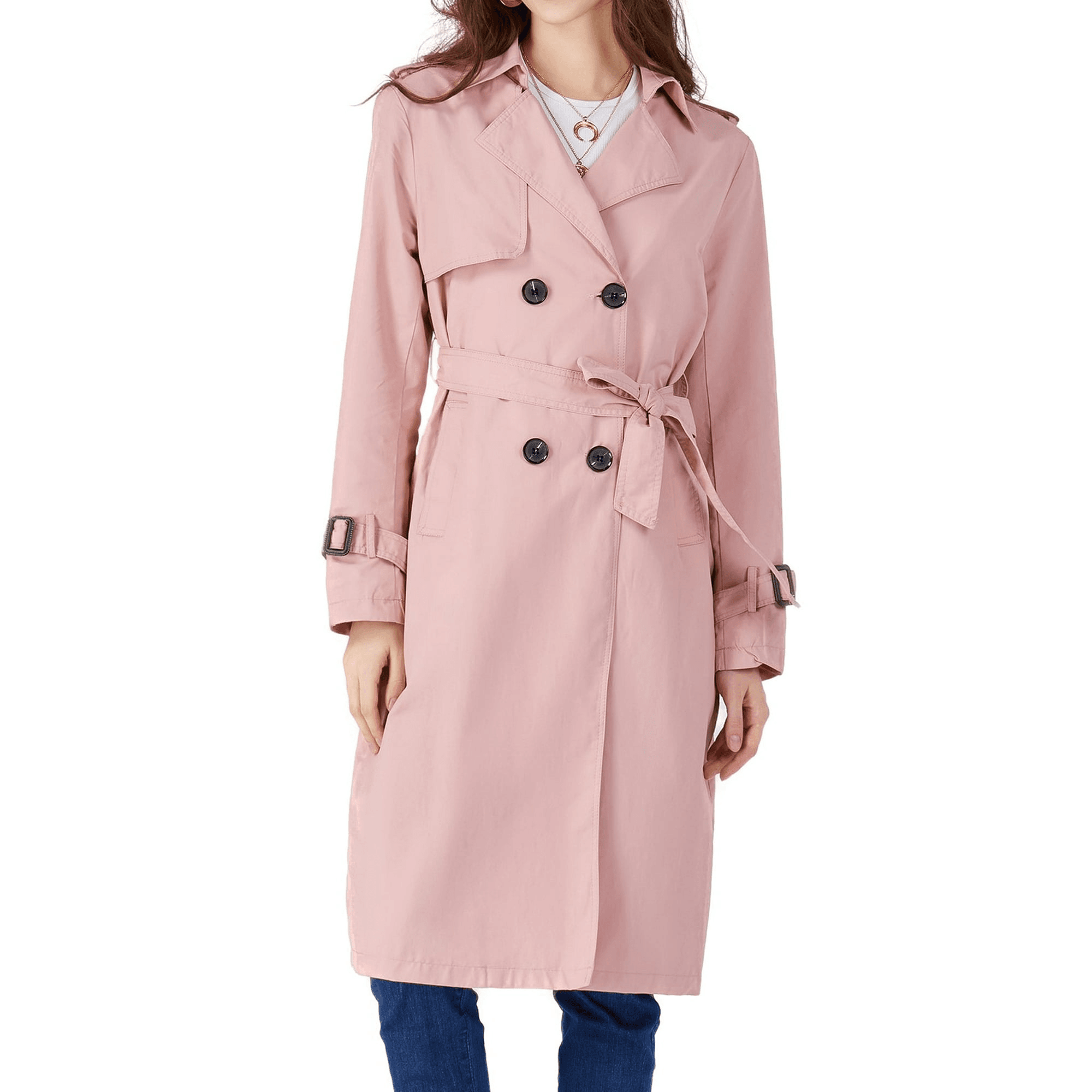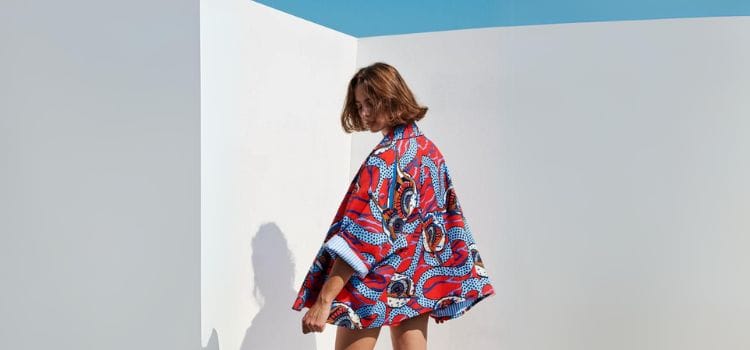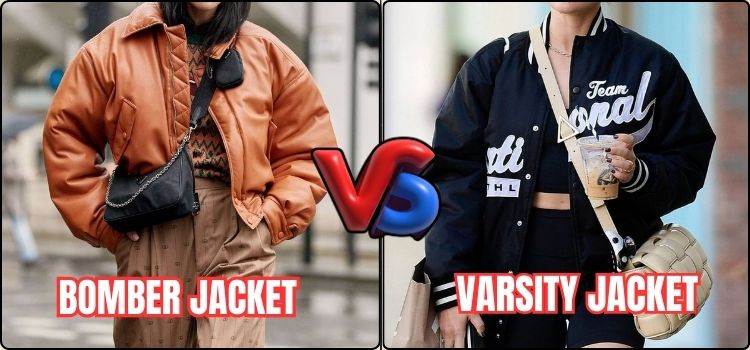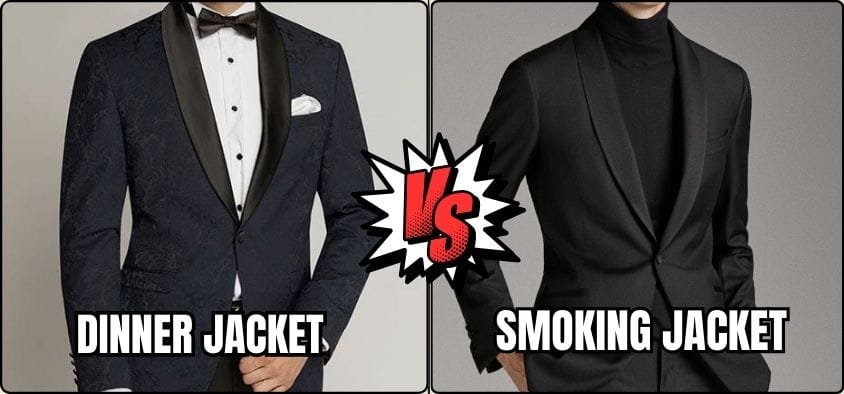Duster vs Trench Coat: Understanding the Difference Between Them
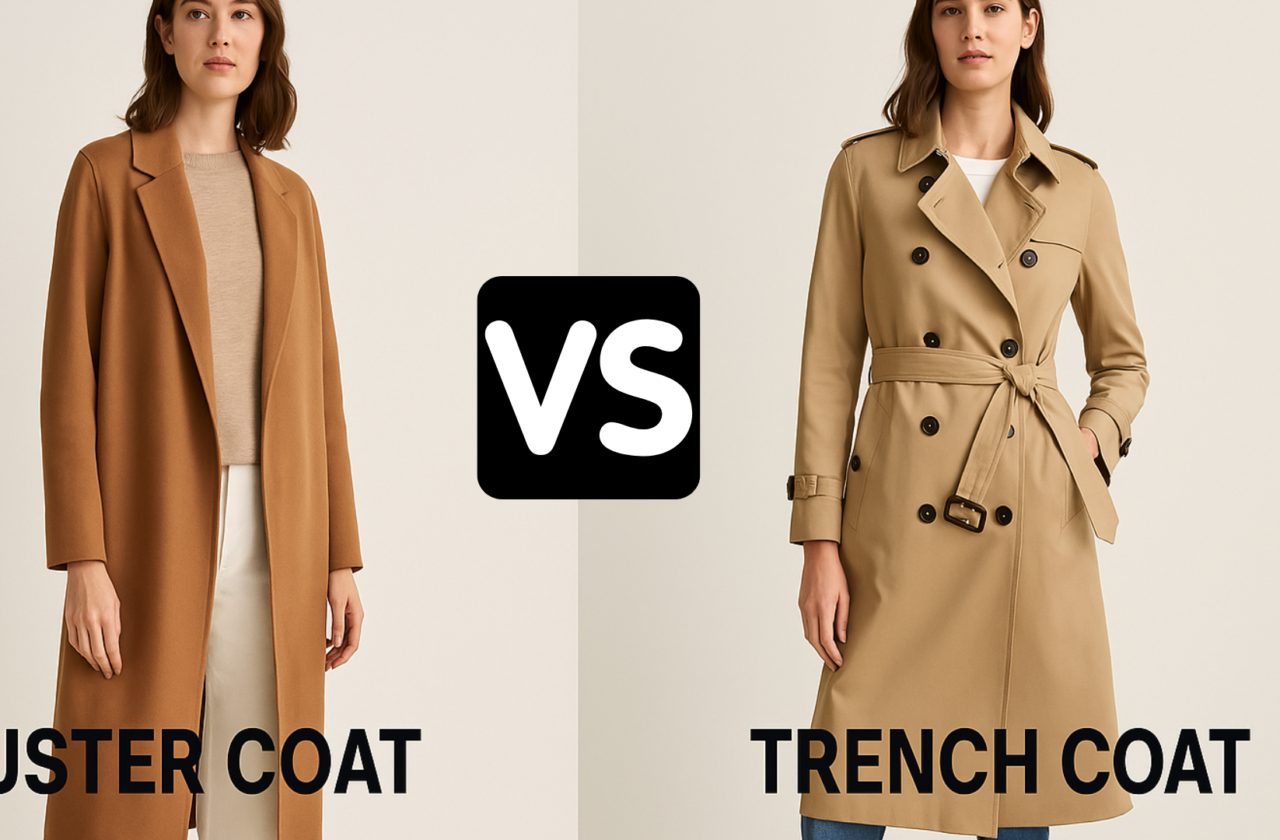
As an Amazon Associate, I earn from qualifying purchases
Ever found yourself staring at your phone and scrolling through endless coat options? Do you wonder what the difference is between a duster and a trench coat? You’re not alone. This fashion dilemma has been trending on search engines. It also appears on social platforms. Searches for “duster coat vs trench coat” spike every fall and spring transitional season.
As someone who’s spent years analyzing fashion trends and watching styles cycle in and out of popularity, I’ve noticed these two iconic outerwear pieces often get confused. Yet each has its own unique history, design elements, and place in your wardrobe. Whether you’re a Gen-Z fashion enthusiast discovering these classics for the first time, you might be a millennial looking to invest in quality outerwear.
What Is a Duster Coat?
A duster coat is a lightweight, loose-fitting long coat that typically falls below the knee or even to the ankles. Originally, it was designed as a practical garment to protect clothing from dust and dirt. Today’s dusters have evolved into fashion statements. They offer both functionality and style. They’re characterized by their relaxed fit, minimal structure, and flowing silhouette, creating dramatic movement when walking.
Modern dusters come in various materials, ranging from cotton and linen for warmer months to wool blends and even leather for cooler weather. Their loose design makes them perfect for layering, and their minimalist aesthetic offers a sophisticated yet effortless vibe that works with nearly any outfit. A duster’s versatility makes it an excellent addition to any wardrobe, functioning as both a practical piece and a style statement.
What Is the History of Duster Coats?
The duster coat has a fascinating origin story rooted in American practicality rather than high fashion. In the late 1800s, when horseback riding and early automobiles kicked up significant dust on unpaved roads, dusters emerged as protective outerwear for travelers and riders. These original dusters were full-length and loose-fitting coats. They were made from light-colored canvas or linen, which are materials that could easily be shaken or brushed clean.
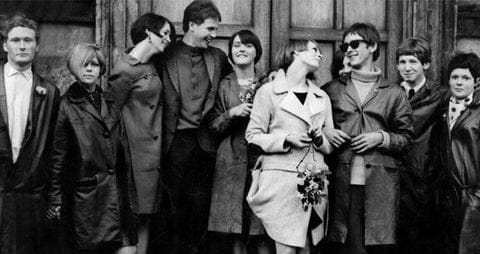
Cowboys and horsemen to protect their clothing from trail dust, particularly favored dusters for protection during long rides. The duster’s design included features like a slit up the back (allowing the coat to drape comfortably over a saddle) and large pockets for carrying essentials. This practical use in shielding riders from the elements became the duster’s primary purpose. The iconic image of horsemen sporting long dusters while riding across the American West has been immortalized in countless Western films. These films highlight the duster’s importance for horse riding.
As automobiles became more common in the early 20th century, dusters evolved into “car dusters.” These were protective garments for early motorists driving open vehicles. These practical coats featured high collars, button closures, and sometimes even goggles attached to provide protection against the elements.
By the 1920s and 1930s, the duster began transitioning from purely utilitarian to fashionable. Hollywood’s influence played a significant role, with stars like Katharine Hepburn embracing the duster’s androgynous appeal. The silhouette complemented the flapper aesthetic of the Roaring Twenties perfectly.
After falling somewhat out of favor in the mid-20th century, dusters experienced a major revival in the 1970s bohemian fashion movement and again in the 1990s minimalist era. Today’s dusters maintain many of their original design elements while incorporating modern materials, colors, and styling possibilities. The leather duster, in particular, has become a popular variation that combines durability with a rugged aesthetic.
What Is a Trench Coat?
A trench coat is a tailored, double-breasted raincoat with distinctive military-inspired details. The classic trench features a belted waist, epaulets (shoulder straps), storm flaps, adjustable cuffs, and traditionally falls to just below the knee. Unlike the relaxed duster, trench coats offer structure and defined silhouettes, creating that classic cinched waist effect when belted.
Originally designed to be waterproof, trench coats are typically made from gabardine, a tightly woven cotton twill fabric, though modern versions might incorporate polyester, leather, or other materials. The standard colors are khaki, beige, and black, though contemporary fashion houses have expanded the palette considerably. A leather trench offers a modern twist on the classic design, bringing edgier styling possibilities to this traditional piece of clothing.
What Is the History of Trench Coats?
The trench coat’s history is inextricably linked to military function and wartime necessity. While various designers claim to have invented it, most fashion historians credit Thomas Burberry with creating the first true trench coat around 1912. Burberry had already revolutionized outerwear with his patented gabardine fabric in 1879. It was a breathable, waterproof material. This was a vast improvement over the heavy rubberized cotton raincoats of the era.
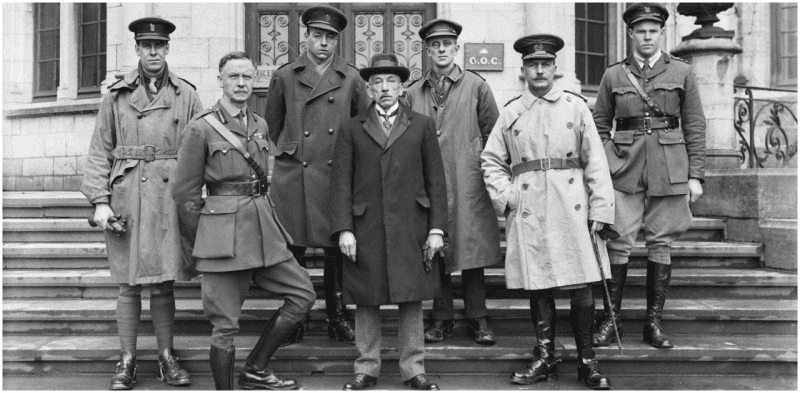
When World War I erupted, Burberry adapted his earlier “Tielocken” coat design to meet military specifications, creating what we now recognize as the trench coat. British officers wore these coats in the trenches, which gave them their name. They featured practical elements for battlefield conditions. These included epaulets for displaying rank insignia, D-rings on the belt for attaching equipment, storm shields for water runoff, and deep pockets for maps and supplies. Trench coats were made from waterproof cotton gabardine to withstand the harsh weather conditions of European battlefields.
After the war, returning soldiers continued wearing their trench coats in civilian life, helping to popularize the style. Hollywood cemented the trench coat’s iconic status when Humphrey Bogart sported one in “Casablanca” (1942), creating an enduring image of mystery and sophistication. The trench coat became a staple of film noir, draped over the shoulders of detectives and femme fatales alike.
Fashion houses like Burberry, Aquascutum, and later Dior and Saint Laurent have continued to refine and reinterpret the trench coat throughout the decades. Its evolution represents a perfect example of how military utility can transform into timeless style.
The trench experienced particular popularity during the 1960s and 1970s, and again in the 1990s when minimalist fashion embraced its clean lines. Today, the trench coat remains one of fashion’s most enduring icons, with designers constantly reimagining it while preserving its distinctive elements. The trench coat’s classic appeal has stood the test of time, making it a wardrobe essential for many.
What Are the Similarities Between Duster Coats and Trench Coats?
Despite their different origins and designs, dusters and trenches share several key characteristics that sometimes cause confusion:
1. Outerwear
Both styles function primarily as outerwear rather than indoor garments. They’re designed to be the final layer of an outfit, providing protection from environmental elements while completing your look. This shared purpose means they occupy similar spaces in a wardrobe and serve comparable functional roles.
The outerwear classification also means they’re both designed with practicality in mind, incorporating features that enhance their protective qualities while maintaining style. Whether keeping dust off your clothes or rain off your suit, both coat types balance form and function. As outerwear pieces, both the duster and trench coat are created to provide protection against the elements.
2. Length
Perhaps the most obvious similarity is their length. Both duster and trench coats typically extend below the knee, with many styles reaching mid-calf or even ankle length. This generous length offers greater coverage than standard jackets and creates a dramatic silhouette that makes both styles instantly recognizable. In fact, some may refer to any full-length coat as either a duster or trench, though this overlooks their distinct characteristics.
The extended length also contributes to their versatility in styling – both can be worn over anything from casual jeans and t-shirts to more formal attire like dresses and suits. The long coat silhouette creates a slimming effect that many find flattering across various body types.
3. Materials
While traditional materials differ between dusters and trenches, contemporary versions of both coat styles are crafted from similar fabric ranges. Modern interpretations of each can be found in cotton, wool, polyester blends, and even leather or suede. Both have evolved to incorporate materials that enhance their durability, comfort, and aesthetic appeal. Genuine leather versions of both styles have gained popularity for their durability and ability to develop character over time.
Season-specific variations exist for both styles as well – lightweight, breathable fabrics for spring and summer, and heavier, insulated versions for fall and winter. This adaptability has helped both coat types maintain relevance throughout the year rather than being confined to specific seasons.
4. Style
Both dusters and trenches have transcended their utilitarian origins to become legitimate fashion statements. They’re considered timeless, foundational pieces that elevate an outfit rather than merely serving a practical purpose. Fashion icons across generations have embraced both styles, cementing their status as wardrobe essentials.
The enduring popularity of both coat types has also led to countless variations and interpretations by designers. From avant-garde deconstructed versions to faithful reproductions of vintage styles, dusters and trenches show remarkable adaptability to changing fashion sensibilities. They maintain their essential character. In the realm of fashion, both have earned their places as iconic silhouettes.
5. Functionality
At their core, both coat styles were created to solve practical problems – dusters to protect from dust and dirt, trenches to shield from wind and rain. This shared emphasis on functionality has shaped their designs. It continues to influence modern iterations. Fashion considerations have become increasingly important.
Both also feature practical elements like large pockets, sturdy closures, and durable construction. These functional aspects have been retained even as the coats have evolved, proving that good design solves problems first, then becomes beautiful through that purposeful intention. The style and functionality of both garments remain central to their appeal.
What Are the Differences Between Duster Coats and Trench Coats?
Despite their similarities, duster and trench coat styles have distinct differences that give each its unique identity and appeal. Understanding the key differences between these two popular outerwear options can help you make an informed choice:
1. Origin
The duster’s American West origins contrast sharply with the trench coat’s European military heritage. The duster emerged from the practical needs of ranchers, cowboys, and early motorists. They needed something for navigating dusty frontier roads. The trench was developed for British officers fighting in European battlefields during World War I. Trench coats were made specifically for combat conditions.
These different birthplaces influenced not just their designs but also their cultural associations. Dusters evoke the rugged individualism of the American frontier. Trench coats are linked to the refined discipline of European military tradition. These associations continue to influence how we perceive and style these garments today.
2. Design
The most significant differences between dusters and trenches lie in their structural design elements. Dusters feature a looser, loose-fitting style with minimal structure – they’re designed to move freely and flow around the body. They typically have simpler closures, fewer embellishments, and a straight silhouette without waist definition. Many duster coats are usually designed with a slit up the back, a feature that originally allowed for ease of wear on horseback.
In contrast, trench coats are structured garments with significant tailoring. They feature double-breasted fronts, belted waists for a defined silhouette, epaulets on the shoulders, storm flaps, wrist straps, and often a distinctive back vent or “storm shield.” Some traditional designs even include leg straps to hold the coat secure during windy conditions. These military-inspired details make trenches more complex garments with a formal, polished appearance. The lapel of a trench coat is typically wider and more structured than a duster’s collar.
3. Usage
While both serve as protective outerwear, their intended usage differs. Dusters were designed primarily for protection against dust and dirt, making them ideal for dry conditions but less suitable for heavy rain. Their loose fit allows for substantial layering underneath, and their lightweight nature makes them excellent transitional pieces.
Trench coats, conversely, were designed specifically for wet, windy weather conditions. The water-resistant gabardine fabric, storm flaps, and button-close collar all work together to keep rain out. Some designs feature a removable cape across the shoulders for additional protection. The more structured design and typically heavier fabric make trenches better suited to cooler temperatures and more formal occasions.
4. Occasions
The differing designs influence when and how each coat is typically worn. Dusters, with their relaxed silhouette and bohemian associations, tend to work best with casual to business-casual outfits. They’re perfect for weekend errands, creative workplace environments, or artsy events where their flowing movement adds dramatic flair. If you want to wear a duster for more formal settings, opt for a duster in darker colors and more structured fabrics.
Trench coats, with their structured elegance and military precision, can easily transition from business professional environments to evening events. A well-fitted trench pairs beautifully with formal work attire and can elevate even simple clothing underneath. The classic beige trench has become shorthand for polished, timeless style. A trenchcoat (sometimes written as one word) has become an iconic symbol of classic sophistication.
5. Popularity
While both styles have experienced periods of heightened popularity, they’ve followed different trajectories. Duster coats have had more distinct boom-and-bust cycles. They were extremely popular during the Western era. Then again in the 1970s bohemian period and the 1990s minimalist phase. Now, they are experiencing another strong revival among Gen-Z and millennials. This is due to their comfortable, oversized aesthetic.
Trench coats, by comparison, have maintained more consistent popularity since their post-WWI civilian adoption. They’ve certainly had standout moments, particularly in 1940s film noir and 1980s power dressing. Yet, the trench has never truly fallen out of fashion. Instead, it has become a recognized wardrobe staple that transcends trends. Trenchcoats continue to appear on runways season after season.
Recent Google Trends data shows searches for “duster coat” experiencing more seasonal volatility, while “trench coat” maintains steadier search volume year-round – reflecting their different roles in contemporary wardrobes. The distinction between the two styles becomes clearer when examining their historical popularity patterns.
Which Coat Should You Choose?
Deciding between a duster and a trench coat depends on several factors beyond mere preference. The difference between a duster and a trench coat is significant when choosing the right outerwear for your needs. Here’s how to determine which might work better for you:
1. Body Type
Your physical frame can influence which coat style will be most flattering. Dusters, with their straight, flowing lines, work beautifully on taller individuals who can carry the dramatic length without being overwhelmed. Their vertical lines create a slimming effect, and the lack of waist definition works well for athletic or rectangular body shapes.
Trench coats, particularly when belted, excel at creating or emphasizing an hourglass silhouette. The belt allows for waist definition while the structured shoulders balance proportions effectively. Shorter individuals might find that the structure of a trench creates more definition than the potentially overwhelming volume of a duster.
Of course, fashion rules are made to be broken, and confidence trumps all – but understanding how each coat interacts with your proportions can help you make a more informed choice.
2. Climate
Your local weather should significantly influence your decision. Dusters typically offer lighter protection suitable for milder climates or dry conditions. Their loose fit makes them excellent layering pieces for transitional seasons, but many lack the weather resistance needed for heavy rain or cold temperatures.
Trench coats, designed specifically for inclement weather, offer superior protection against rain and wind. Many come with removable linings for temperature adaptability. If you live somewhere with frequent precipitation, a properly waterproofed trench will serve you better than most duster options.
For those in various weather conditions or variable climates, having both might be justifiable – a duster for dry, mild days and a trench for wetter conditions. A leather duster vs a traditional trench coat offers different levels of protection in different conditions.
3. Personal Style
Perhaps the most important consideration is how each coat aligns with your personal aesthetic. Dusters complement bohemian, artistic, vintage-inspired, and relaxed styling approaches. They work beautifully with flowy dresses, wide-leg pants, and layered looks that emphasize movement and comfort.
Trench coats enhance classic, preppy, professional, and structured style preferences. They pair perfectly with tailored clothing, add polish to casual outfits, and project an air of put-together sophistication. The trench’s heritage design elements appeal to those who appreciate traditional craftsmanship and timeless appeal.
Consider which description resonates more with your existing wardrobe and the image you wish to project. The right coat should feel like an extension of your personal style rather than a departure from it. If you’re looking for an overcoat with a distinct flair, you might opt for a duster with its flowing silhouette.
4. Budget
Quality varies widely in both categories, but there are some general price considerations. Entry-level dusters, due to their simpler construction, can often be found at lower price points than comparable trench coats. Fast fashion retailers frequently offer duster styles under $100, making them accessible options for trend-conscious shoppers.
Traditional trench coats, with their complex construction, numerous details, and often superior weatherproofing, typically command higher prices. Heritage brands like Burberry and Aquascutum offer iconic trenches starting around $1,500, though mid-range options from brands like J.Crew or Banana Republic fall between $200-500.
Investment-quality versions of both styles can last decades with proper care, making cost-per-wear calculations more favorable despite higher upfront costs. A well-made duster or trench coat allows for various styling options across multiple seasons, increasing its value.
5. Maintenance
Caring for your coat should factor into your decision as well. Dusters, particularly in lightweight fabrics, may require more frequent cleaning due to their dust-collecting nature (ironically, given their original purpose). Their flowing design can also make home ironing challenging for certain materials.
Trench coats, especially those with quality weatherproofing, often need specialized cleaning to maintain their water-resistant properties. Their structured design with multiple details can make repairs more complex and expensive if damaged.
Consider how willing you are to maintain your outerwear properly, as neglect can significantly shorten the lifespan of either coat type. Both dusters and trenches can be excellent investments if properly maintained.
The Celebrity Effect: Who’s Wearing What?
The influence of celebrities on coat trends cannot be overstated. For trench coats, classic style icons like Audrey Hepburn and more contemporary figures such as Meghan Markle have reinforced the garment’s timeless elegance. The Burberry trench, in particular, has been spotted on everyone from Emma Watson to Beyoncé, helping maintain its status symbol appeal.
Duster coats have found champions in fashion-forward celebrities like Zendaya, the Olsen twins, and Hailey Bieber. Their street style appearances in flowing dusters have been extensively documented on social media, driving renewed interest particularly among younger consumers. Korean pop stars have also embraced the dramatic silhouette of dusters, influencing global fashion trends through their immense popularity.
Celebrity styling choices often determine how these coats are perceived generationally. When Timothée Chalamet sports a modernized trench or Billie Eilish opts for an oversized duster, their massive Gen-Z followings take notice and demand similar options. The trench vs duster coat debate plays out visibly on red carpets and in paparazzi photos.
The Social Media Landscape: Trending Hashtags and Content
On social platforms, dusters and trenches maintain distinct presences. Instagram and TikTok reveal interesting patterns in how each coat type is presented and discussed:
On Instagram, #trenchcoat (8.2M posts) outperforms #dustercoat (1.3M posts) in sheer volume, but engagement metrics tell a different story. Duster content sees higher engagement rates among younger audiences, with related hashtags like #oversizedstyle and #layeringseason frequently appearing alongside.
TikTok has been particularly instrumental in the duster’s recent resurgence. The platform’s short-form videos showcase the dramatic movement of dusters perfectly, with hashtags like #dustercoatoutfit and #dusterlook generating millions of views. Style challenges featuring dusters regularly go viral, such as the “Coastal Grandmother” aesthetic that prominently featured lightweight linen dusters.
Pinterest data reveals seasonal patterns, with trench coat searches dominating rainy spring months, while duster searches peak during fall transitional weather. The platform’s mood board format favors the layering potential of both coat styles, with users creating extensive collections around styling each type.
Reddit fashion communities offer more nuanced discussions. Subreddits like r/femalefashionadvice frequently debate the practical merits of each coat style. They consider different lifestyles and body types. These conversations often highlight the differences between these two popular outerwear choices across various price points.
Brand Evolution: How Fashion Houses Interpret Each Style
The evolution of these coat styles through various fashion houses reveals much about their adaptability and enduring appeal.
Trench Coat Innovators
Burberry remains the definitive trench coat brand, with their iconic Westminster and Kensington styles serving as the gold standard. Their traditional gabardine trenches retail between $1,890-2,890, positioning them as luxury investment pieces. The brand has successfully balanced heritage craftsmanship with contemporary relevance through limited collaborations with designers like Vivienne Westwood and Gosha Rubchinskiy.
Brands like Mackintosh and Aquascutum continue the British tradition of excellent trench craftsmanship. Designers like Balenciaga and Vetements have deconstructed the trench into avant-garde interpretations. These features exaggerated proportions and unexpected materials.
Mid-market brands such as Aritzia, COS, and & Other Stories offer quality trenches at more accessible price points ($200-500), often simplifying some traditional details while maintaining the classic silhouette. The distinction between high-end and affordable trenches often comes down to fabric quality and attention to detail.
Duster Coat Specialists
The duster market shows more diversity in interpretation. Brands like Free People ($168-298) and Anthropologie ($170-398) lean into the bohemian heritage of dusters with flowing silhouettes in natural fabrics and artistic details.
Minimalist brands like The Row and Jil Sander elevate dusters to luxury status ($1,200-3,000). They achieve this through impeccable tailoring and premium materials. The designs are often in monochromatic palettes that emphasize the coat’s architectural qualities.
Fast fashion retailers like Zara and H&M have embraced the duster trend enthusiastically, offering seasonal variations at entry-level prices ($49-129). These versions typically follow current color trends and fabric preferences, making dusters accessible to trend-conscious shoppers on limited budgets.
Sustainability-focused brands like Eileen Fisher and Stella McCartney have created duster-inspired pieces using eco-friendly materials. These brands use production methods that appeal to environmentally conscious consumers. They attract those willing to invest in responsible fashion. The length duster styles they offer tend to be made from sustainable materials that still keep you warm in colder temperatures.
FAQs: Everything Else You Need to Know
Can I wear a duster coat if I’m petite?
Absolutely! The key is finding the right proportions. Look for dusters that hit just below the knee rather than ankle-length, and consider lightweight fabrics that won’t overwhelm your frame. Wearing heeled boots or shoes can help balance the vertical lines of a duster, and choosing monochromatic outfits underneath creates a lengthening effect.
Are trench coats still fashionable in 2025?
Without question. The trench coat remains one of fashion’s most enduring classics, continuously reinvented while maintaining its essential character. Recent runway collections from Burberry, Dior, and Bottega Veneta all featured prominent trench coat styling. Street style photography from major fashion weeks shows no decline in their popularity among industry insiders.
How do I care for a quality trench coat?
Most high-quality trench coats should be professionally dry cleaned rather than machine washed to preserve their structure and any water-resistant treatments. Between cleanings, spot cleaning with a damp cloth is usually sufficient. Always hang your trench on a sturdy, shaped hanger to maintain shoulder straps and structure, and never store it while damp. For coats with removable linings, clean these components separately according to their specific care requirements.
Can men wear duster coats without looking costumey?
Definitely! While dusters have Western film associations, contemporary men’s styling has embraced the silhouette in sophisticated ways. The key is modern fabric choices (think wool blends rather than canvas) and thoughtful proportions. Brands like AMI, Lemaire, and even Uniqlo offer modern duster interpretations that work perfectly in urban environments. Pairing a duster with simple, tailored undergarments rather than Western wear elements creates a contemporary look.
What’s the best color for a first trench coat purchase?
Classic beige or khaki remains the most versatile choice for a first trench coat, offering maximum styling potential across seasons and dress codes. Black provides a more modern, urban aesthetic and shows less wear over time. For those with extensive outerwear collections already, consider olive green or navy as sophisticated alternatives that still function as neutrals with most wardrobes.
How can I style a duster coat for winter?
Layer, layer, layer! A winter-appropriate duster works best with thoughtful layering. Look for wool or leather duster options with sufficient weight, and layer with knit sweaters, scarves, and even thin puffer vests underneath. Completing the look with boots and a substantial bag creates a balanced silhouette. Some brands now offer dusters with adjustable drawstrings or buttonable rear slits specifically designed for colder months.
Conclusion: Making Your Choice
The duster versus trench coat decision ultimately reflects your personal style story more than any objective superiority of either garment. Both have earned their place in fashion history through a perfect balance of function and form, adapting across decades while maintaining their essential character.
What’s your coat of choice – are you team duster, team trench, or have you found room in your wardrobe for both? Let me know in the comments which style speaks to you and how you’ve made it your own!
As an Amazon Associate, I earn from qualifying purchases
